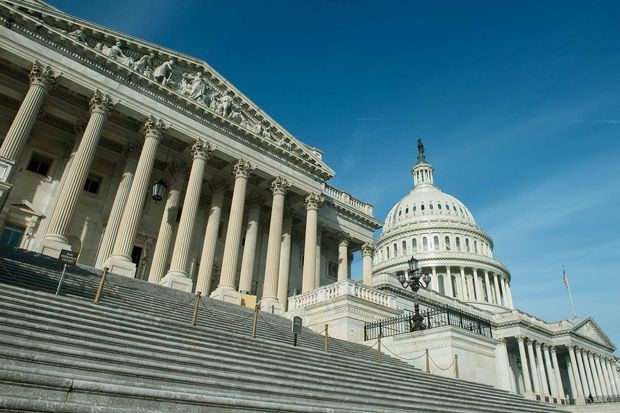I once had a law school professor who joked that we change the bankruptcy laws to give business to bankruptcy attorneys. So I joke often that the laws concerning retirement plans changes to give ERISA attorneys like me something to do. The SECURE Act which changes many retirement plan provisions were just signed into law with many changes effective in 2020. This article is about what you need to know about the SECURE Act and its affect on your retirement plan.
Open Multiple Employer Plans
The most talked-about change concerning the SECURE Act is the “return” of Open Multiple Employer Plans (MEPs). In 2012, the Department of Labor (DOL) opined that multiple employer plans where there was no commonality between adopting employers would not be considered a single plan for Form 5500 and plan audit purposes. Since that time, the DOL has not offered any regulation that would allow for the return of these Open MEPs to be treated as a single plan. The SECURE changes that by providing for Open MEPs through something called a Pooled Employer Plan (PEP). A PEP has to be sponsored by a Pooled Plan Provider (PPP), which is likely to be a financial services company, third-party administrator, insurance company, recordkeeper, or similar entity. The PPP must serve as the ERISA section 3(16) plan administrator, as well as the named fiduciary for the plan. The PPP will have to file their status with the DOL. The PEP provisions are delayed a year and will be effective for plan years beginning after December 31, 2020. While I think this is a great development because it will help increase retirement plan coverage, it might have no bearing on you if you currently sponsor a 401(k) plan and have no interest in pooling your plan assets with other unaffiliated employers because you don’t want to give up control or your plan is large enough where being part of a PEP won’t have any cost savings for you.
The big change is with 401(k) eligibility
I think the biggest change through the SECURE Act will be the treatment of long-time, part-time employees under your 401(k) plan. Under current law, your 401(k) plan can exclude part-time employees from participation if these employees don’t complete 1,000 hours of service in a year. The SECURE Act will require you to extend participation to any part-time employee who has worked at least 500 hours in each of the immediately preceding three consecutive 12‑month periods (for salary deferral purposes only). That means you won’t have to provide matching or other employer contributions to these part-time employees. These changes are effective for plan years beginning after December 31, 2020, but you won’t have to consider hours of service before 2021 as part of this eligibility calculations. That means that the change will take a couple of years before these part-time employees can be considered eligible. Before that time, your 401(k) plan will have to be amended to incorporate these new eligibility rules and you will need to update your payroll and/or human resources information systems to identify and track this new class of part-time employees for eligibility purposes.
RMD Age Increased
Thanks to medical breakthroughs, people live longer. The average life expectancy in the United States is now almost 79 years. So to deal with that increase, the age for required minimum distributions (RMDs) will be increased as well under the SECURE Act. Currently, a participant in your retirement plan is required to begin receiving certain minimum distributions by April 1 of the calendar year following the year in which the participant attains age 70½ or terminates employment, whichever comes later. The SECURE Act increases the required minimum distributions (RMD) age to 72. This change applies to both defined benefit plans and defined contribution plans and is effective for participants who turn 70½ after December 31, 2019.
Changes to Post‑Death RMDs, the Stretch is Gone
Your plan currently allows a beneficiary to “stretch” distributions from the plan over the beneficiary’s remaining life expectancy. The SECURE Act places caps of 10 years (for designated beneficiaries) and 5 years (for non-designated beneficiaries) on the time permitted to exhaust their plan assets. The 10-year rule will not apply to an “eligible designated beneficiary,” which includes a beneficiary who, as of the date of the participant’s death, is a surviving spouse, a minor child, a disabled person, a chronically ill person, or any person not more than 10 years younger than the employee. Such eligible designated beneficiaries may spread RMDs over the beneficiary’s expected lifetime, except that for minor children, the 10-year rule begins to apply on the date that the minor child reaches the age of majority.
Huge changes for safe harbor non-elective plans
Safe harbor plans which have been effect since 1999 can allow you to avoid adverse 401(k) discrimination testing results by providing a minimum, fully vested contribution to your participants. Under current law, safe harbor 401(k) plans that provide the 3% nonelective contribution to participants must provide annual safe harbor notices to covered participants. The SECURE Act will eliminate that notice requirement. It will also permit a 401(k) plan to elect into the 3% nonelective safe harbor at any time up until 30 days before the close of the plan year. Previously, you had to make that choice before the beginning of the next plan year. Also, the SECURE Act will permit a 401(k) plan to elect into the nonelective safe harbor even after the 30th day before the close of the plan year as long as (1) the amendment to adopt the nonelective safe harbor is made by the end of the following plan year, and (2) the nonelective contribution is at least 4%. This change is effective for plan years after 2019. If you’re considering to adopt a 401(k) safe harbor provision in 2020 and beyond, you have greater flexibility and you can now wait until later in 2020 or even into 2021 to make that decision. Just keep in mind that these changes have no affect if you maintain a matching safe harbor plan.
Increased QACA Safe Harbor Rate Cap
Under existing law, 401(k) plan automatic contribution arrangements that satisfy the qualified automatic contribution arrangement (QACA) safe harbor to avoid 401(k) nondiscrimination testing must cap default automatic contribution rates at 10%. The SECURE Act would retain this 10% cap for a participant’s first year of participation but allows you to raise the rate to 15% for subsequent years if you offer the QACA. This change is effective for plan years beginning after 2019.
Push for annuities in defined contribution plans
Speaking of people living longer, there has been a renewed push to allow for more use of annuities within defined contribution plans, such as your 401(k) plan. The SECURE Act will require plan benefit statements to include an estimate of the monthly income a participant could receive in retirement if a qualified joint and survivor annuity or a single-life annuity were purchased. These estimates must be provided at least annually and regardless of whether any annuity distribution option is offered under the plan. Also, the SECURE Act provides for a new safe harbor that allows defined contribution plan fiduciaries to rely on in selecting lifetime income investment providers to make available as an investment option or a component of an investment option under the plan. That means that if you satisfy these requirements and qualify for the safe harbor, you would be shielded from liability from participant losses in the event of the annuity provider’s inability to pay the full benefits when they are due.
Penalties for failing to File Form 5500 Increased
The SECURE Act raises the late filing penalties for Form 5500. The late filing penalty for failing to file a Form 5500 is increased to $250 per day, capped at $150,000 (increased from $25 and $15,000, respectively). The increased penalties are effective for returns and filings due or required to be provided after December 31, 2019. To avoid these increased penalties when you failed to file, you can still apply with the DOL’s Delinquent Filer Voluntary Compliance Program.
Change in In-Service Distribution Age for Defined Benefit Plans
If you sponsor a pension plan, such as a defined benefit pension plan, money purchase pension plan, and hybrid plan, you’re not allowed to permit distributions before the earlier of retirement (i.e., termination of service) or normal retirement age or an in-service distribution at age 62. The SECURE Act reduces the earliest age an employee can receive in-service retirement benefits from a pension plan from age 62 to age 59½ (which is the earliest age you can allow for in-service distributions of salary deferrals from a 401(k) plan). The change is effective for plan years beginning after December 31, 2019.
Child Birth or Adoption Distributions up to $5,000
The SECURE Act will allow your plan to permit penalty‑free distributions to participants of up to $5,000 for expenses related to the birth or adoption of a child. The adopted child must be either under age 18 or physically or mentally incapable of self‑support, and the distribution must be made during the one year following the birth or legal adoption of the child. Also, these special distributions can later be repaid to a qualified retirement plan. This change is effective for distributions after 2019, it is up to you to offer this special distribution under your Plan.







